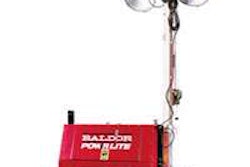The Asphalt Pavement Alliance (APA) is refuting claims by the concrete industry that the cost of asphalt pavements has risen to match the cost of concrete.
“Asphalt pavement is the buy of the year,” said asphalt producer/contractor Larry Lemon, speaking on behalf of the National Asphalt Pavement Association, in a written statement. “There are a couple of reasons for this.
“For one, with the economy causing a slowdown in construction activity, competition is fierce. Also, the price of asphalt cement is lower than it was last year,” Lemon continued. “What it adds up to is that owners and road-building agencies are getting a great price.”
Lemon is the Chairman-elect of NAPA’s Board of Directors and is slated to take office in January. He is Chairman of Haskell Lemon Construction Co. in Oklahoma.
Concurring with Lemon was Asphalt Institute President Pete Grass, P.E. In a recent address at the International Conference on Perpetual Pavements, Grass said, “I’m bullish on asphalt.”
He reported on research showing that the U.S. demand for asphalt is the lowest in nearly 30 years. “There has never been a better time for an agency/owner to invest in their infrastructure project by any means available,” he commented.
Examples from around the country illustrate the cost-effectiveness of asphalt pavements:
In Kentucky, 10 pavement projects were submitted for contracting on the alternate bid system in 2008 and 2009. The lowest bids for 9 of the 10 were asphalt.
In Virginia, the price for asphalt cement is less than half of what it was in 2008. Prices for asphalt pavement material are down as well. (Asphalt cement is roughly 5 percent by weight of the pavement material, with the remaining 95 percent being made up of stones, sand, and gravel.)
In Alabama, asphalt pavement construction is priced at 2007 levels. Reflecting the competitive nature of the marketplace, almost all contracts that the DOT has awarded for work on state highways in 2009 have been below the engineers’ estimates.
In Minnesota, 10 sizeable pavement projects have been alternate design bid in the construction seasons of 2007, 2008, and 2009. Some were for the DOT and others were for large commercial customers. The lowest bid on all 10 projects was for the asphalt pavement.
Lemon concluded, “Asphalt isn’t just the best material for roads and highways, it’s the most cost-effective. All the state DOT engineers across the country should be aware that their dollar will go at least 30 percent farther in 2009 than it would have last year. Now is the time for America to renew our roads and highways by milling the surface for recycling, and then placing a new asphalt overlay. The traveling public will be getting a new road that is smooth, durable, safe and quiet. And the road agencies will be getting their best value











